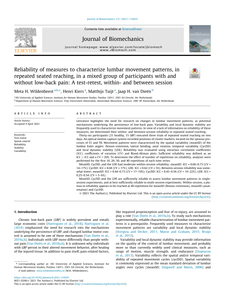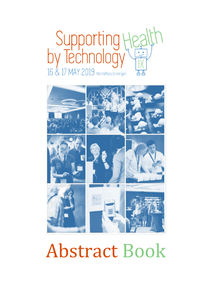This study investigated the effect of work pace on workload, motor variability and fatigue during light assembly work. Upper extremity kinematics and electromyography (EMG) were obtained on a cycle-to-cycle basis for eight participants during two conditions, corresponding to "normal" and "high" work pace according to a predetermined time system for engineering. Indicators of fatigue, pain sensitivity and performance were recorded before, during and after the task. The level and variability of muscle activity did not differ according to work pace, and manifestations of muscle fatigue or changed pain sensitivity were not observed. In the high work pace, however, participants moved more efficiently, they showed more variability in wrist speed and acceleration, but they also made more errors. These results suggest that an increased work pace, within the range addressed here, will not have any substantial adverse effects on acute motor performance and fatigue in light, cyclic assembly work.STATEMENT OF RELEVANCE: In the manufacturing industry, work pace is a key issue in production system design and hence of interest to ergonomists as well as engineers. In this laboratory study, increasing the work pace did not show adverse effects in terms of biomechanical exposures and muscle fatigue, but it did lead to more errors. For the industrial engineer, this observation suggests that an increase in work pace might diminish production quality, even without any noticeable fatigue being experienced by the operators.
DOCUMENT
Research into automatic text simplification aims to promote access to information for all members of society. To facilitate generalizability, simplification research often abstracts away from specific use cases, and targets a prototypical reader and an underspecified content creator. In this paper, we consider a real-world use case – simplification technology for use in Dutch municipalities – and identify the needs of the content creators and the target audiences in this scenario. The stakeholders envision a system that (a) assists the human writer without taking over the task; (b) provides diverse outputs, tailored for specific target audiences; and (c) explains the suggestions that it outputs. These requirements call for technology that is characterized by modularity, explainability, and variability. We argue that these are important research directions that require further exploration
MULTIFILE

Literature highlights the need for research on changes in lumbar movement patterns, as potential mechanisms underlying the persistence of low-back pain. Variability and local dynamic stability are frequently used to characterize movement patterns. In view of a lack of information on reliability of these measures, we determined their within- and between-session reliability in repeated seated reaching. Thirty-six participants (21 healthy, 15 LBP) executed three trials of repeated seated reaching on two days. An optical motion capture system recorded positions of cluster markers, located on the spinous processes of S1 and T8. Movement patterns were characterized by the spatial variability (meanSD) of the lumbar Euler angles: flexion–extension, lateral bending, axial rotation, temporal variability (CyclSD) and local dynamic stability (LDE). Reliability was evaluated using intraclass correlation coefficients (ICC), coefficients of variation (CV) and Bland-Altman plots. Sufficient reliability was defined as an ICC ≥ 0.5 and a CV < 20%. To determine the effect of number of repetitions on reliability, analyses were performed for the first 10, 20, 30, and 40 repetitions of each time series. MeanSD, CyclSD, and the LDE had moderate within-session reliability; meanSD: ICC = 0.60–0.73 (CV = 14–17%); CyclSD: ICC = 0.68 (CV = 17%); LDE: ICC = 0.62 (CV = 5%). Between-session reliability was somewhat lower; meanSD: ICC = 0.44–0.73 (CV = 17–19%); CyclSD: ICC = 0.45–0.56 (CV = 19–22%); LDE: ICC = 0.25–0.54 (CV = 5–6%). MeanSD, CyclSD and the LDE are sufficiently reliable to assess lumbar movement patterns in single-session experiments, and at best sufficiently reliable in multi-session experiments. Within-session, a plateau in reliability appears to be reached at 40 repetitions for meanSD (flexion–extension), meanSD (axial-rotation) and CyclSD.
MULTIFILE

Occupational stress can cause all kinds of health problems. Resilience interventions that help employees deal with and adapt to adverse events can prevent these negative consequences. Due to advances in sensor technology and smartphone applications, relatively unobtrusive self-monitoring of resilience-related outcomes is possible. With models that can recognize intra-individual changes in these outcomes and relate them to causal factors within the employee’s own context, an automated resilience intervention that gives personalized, just-in-time feedback can be developed. The Wearables and app-based resilience Modelling in employees (WearMe) project aims to develop such models. A cyclical conceptual framework based on existing theories of stress and resilience is presented, as the basis for the WearMe project. The included concepts are operationalized and measured using sleep tracking (Fitbit Charge 2), heart rate variability measurements (Elite HRV + Polar H7) and Ecological Momentary Assessment (mobile app), administered in the morning (7 questions) and evening (12 questions). The first (ongoing) study within the WearMe project investigates the feasibility of the developed measurement cycle and explores the development of such models in social studies students that are on their first major internship. Analyses will target the development of both within-subject (n=1) models, as well as between-subjects models. The first results will be shared at the Health By Tech 2019 conference in Groningen. If successful, future work will focus on further developing these models and eventually exploring the effectiveness of the envisioned personalized resilience system.
DOCUMENT

Background: Development of more effective interventions for nonspecific chronic low back pain (LBP), requires a robust theoretical framework regarding mechanisms underlying the persistence of LBP. Altered movement patterns, possibly driven by pain-related cognitions, are assumed to drive pain persistence, but cogent evidence is missing. Aim: To assess variability and stability of lumbar movement patterns, during repetitive seated reaching, in people with and without LBP, and to investigate whether these movement characteristics are associated with painrelated cognitions. Methods: 60 participants were recruited, matched by age and sex (30 back-healthy and 30 with LBP). Mean age was 32.1 years (SD13.4). Mean Oswestry Disability Index-score in LBP-group was 15.7 (SD12.7). Pain-related cognitions were assessed by the ‘Pain Catastrophizing Scale’ (PCS), ‘Pain Anxiety Symptoms Scale’ (PASS) and the task-specific ‘Expected Back Strain’ scale(EBS). Participants performed a seated repetitive reaching movement (45 times), at self-selected speed. Lumbar movement patterns were assessed by an optical motion capture system recording positions of cluster markers, located on the spinous processes of S1 and T8. Movement patterns were characterized by the spatial variability (meanSD) of the lumbar Euler angles: flexion-extension, lateralbending, axial-rotation, temporal variability (CyclSD) and local dynamic stability (LDE). Differences in movement patterns, between people with and without LBP and with high and low levels of pain-related cognitions, were assessed with factorial MANOVA. Results: We found no main effect of LBP on variability and stability, but there was a significant interaction effect of group and EBS. In the LBP-group, participants with high levels of EBS, showed increased MeanSDlateral-bending (p = 0.004, η2 = 0.14), indicating a large effect. MeanSDaxial-rotation approached significance (p = 0.06). Significance: In people with LBP, spatial variability was predicted by the task-specific EBS, but not by the general measures of pain-related cognitions. These results suggest that a high level of EBS is a driver of increased spatial variability, in participants with LBP.
DOCUMENT

In cognitive science, creative ideas are defined as original and feasible solutions in response to problems. A common proposal is that creative ideas are generated across dedicated cognitive pathways. Only after creative ideas have emerged, they can be enacted to solve the problem. We present an alternative viewpoint, based upon the dynamic systems approach to perception and action, that creative solutions emerge in the act rather than before. Creative actions, thus, are as much a product of individual constraints as they are of the task and environment constraints. Accordingly, we understand creative motor actions as functional movement patterns that are new to the individual and/or group and adapted to satisfy the constraints on the motor problem at hand. We argue that creative motor actions are promoted by practice interventions that promote exploration by manipulating constraints. Exploration enhances variability of functional movement patterns in terms of either coordination or control solutions. At both levels, creative motor actions can emerge from finding new and degenerate adaptive motor solutions. Generally speaking, we anticipate that in most cases, when exposed to variation in constraints, people are not looking for creative motor actions, but discover them while doing an effort to satisfy constraints. For future research, this paper achieves two important aspects: it delineates how adaptive (movement) variability is at the heart of (motor) creativity, and it sets out methodologies toward stimulating adaptive variability.
DOCUMENT

MULTIFILE
This study investigated to what degree lesson-to-lesson variability in teachers' goal clarification and process feedback explains variability in secondary students’ motivational correlates. Students (N=570, 24 classes) completed questionnaires at six occasions. Multilevel regression analyses showed that relations between perceived process feedback and experienced need satisfaction (i.e., competence, autonomy and relatedness) were conditional on perceived goal clarification. No such interaction effects between process feedback and goal clarification were found for need frustration (i.e., experiencing failure, feeling pushed to achieve goals, feeling rejected). In general, when students perceived more process feedback or goal clarification, students experienced more competence, autonomy and relatedness satisfaction. Yet, when perceiving very high levels of process feedback, additional benefits of goal clarification were no longer present (and vice versa). In lessons in which students perceived goals to be less clear, they experienced more need frustration. No associations were found between process feedback and need frustration.
DOCUMENT

In soccer, critical match events like goal attempts can be preceded by periods of instability in the balance between the two teams' behaviours. Therefore, we determined periods of high variability in the distance between the teams' centroid positions longitudinally and laterally in an international-standard soccer match and evaluated corresponding match events. Position data were collected with AMISCO Pro®. Inter-team distance variability was calculated over a 3-s moving window. Out of the 242 match periods that exceeded the variability criterion, 51 were dead-ball situations. Match events identified through longitudinal inter-team distance primarily related to defending players moving forward-backward after a longitudinal pass. Match events identified through lateral inter-team distance mainly corresponded with defending players moving laterally following sideways passing. One of two goals and two of fourteen goal-attempts were preceded by a period of high variability. Together, periods of highly variable inter-team distance were associated with collective defensive actions and team reorganisation in dead-ball moments rather than goals or goal attempts. Inter-team dynamics quantified (mutual) reorganisation of the teams and marked teams' collective defensive ability to respond to attacking explorations. doi: 10.1080/02640414.2012.703783
LINK
The emergence of wearable sensors that allow for unobtrusive monitoring of physiological and behavioural patterns introduces new opportunities to study the impact of stress in a real-world context. This study explores to what extent within-subject trends in daily Heart Rate Variability (HRV) and daily HRV fluctuations are associated with longitudinal changes in stress, depression,anxiety, and somatisation. Nine Dutch police officers collected daily nocturnal HRV data using an Oura ring during 15–55 weeks. Participants filled in the Four-Dimensional Symptoms Questionnaire every 5 weeks. A sample of 47 five-week observations was collected and analysed using multiple regression. After controlling for trends in total sleep time, moderate-to-vigorous physical activityand alcohol use, an increasing trend in the seven-day rolling standard deviation of the HRV (HRVsd) was associated with increases in stress and somatisation over 5 weeks. Furthermore, an increasing HRV trend buffered against the association between HRVsd trend and somatisation change, undoing this association when it was combined with increasing HRV. Depression and anxiety could not berelated to trends in HRV or HRVsd, which was related to observed floor effects. These results show that monitoring trends in daily HRV via wearables holds promise for automated stress monitoring and providing personalised feedback.
DOCUMENT